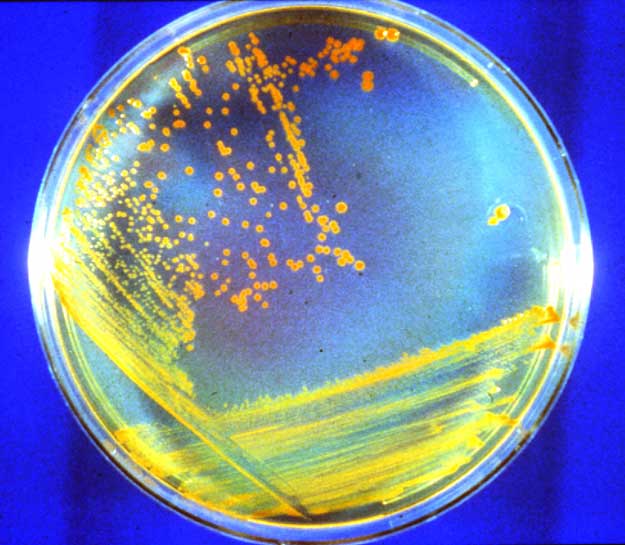
|
Credit: Michael Daly
(Uniformed Services University
of the Health Sciences),
DOE
Explanation:
These bacteria could survive on another planet.
In an Earth lab, Deinococcus radiodurans (D. rad) survive extreme levels of
radiation, extreme temperatures,
dehydration, and exposure to
genotoxic chemicals.
Amazingly, they even have the ability to repair their own
DNA,
usually with 48 hours.
Known as an extremophile,
bacteria such as
D. rad are of interest to
NASA
partly because they might be adaptable to help human
astronauts
survive on other worlds.
A recent
map of D. rad's
DNA might allow biologists to augment their
survival skills with the ability to produce medicine, clean water, and oxygen.
Already they have been
genetically engineered to
help clean up spills of toxic
mercury.
Likely one of the oldest surviving life forms,
D. rad was discovered by accident in the 1950s when scientists investigating
food preservation
techniques could not easily kill it.
Pictured above,
Deinococcus radiodurans grow quietly
in a dish.
|
January February March April May June July August September October November December |
| ||||||||||||||||||||||||||||||||||||||||||||||||
NASA Web Site Statements, Warnings, and Disclaimers
NASA Official: Jay Norris. Specific rights apply.
A service of: LHEA at NASA / GSFC
& Michigan Tech. U.
Based on Astronomy Picture
Of the Day
Publications with keywords: life
Publications with words: life
See also:
